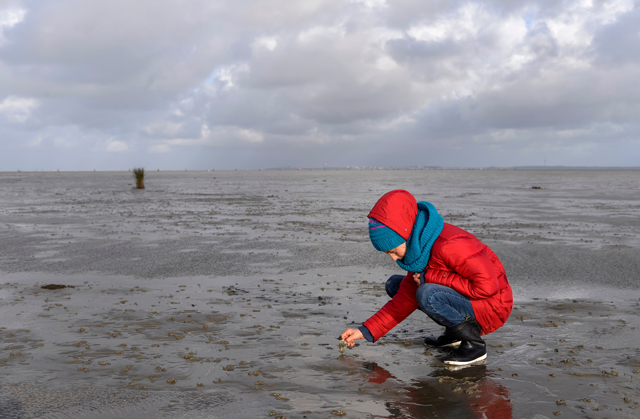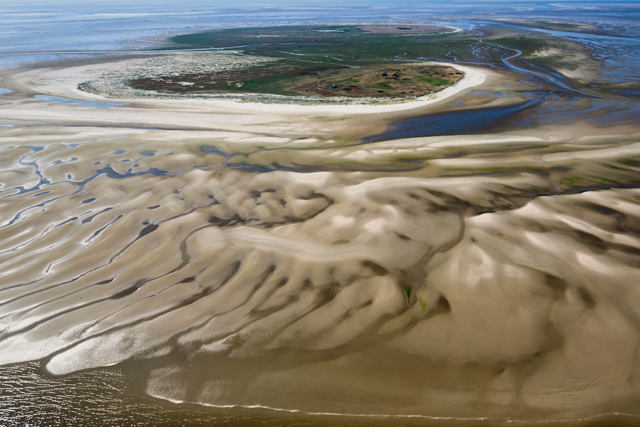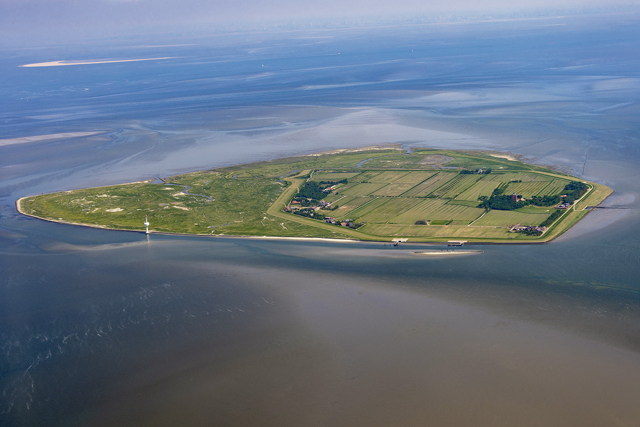
Sometimes being the smallest isn’t a bad thing. In the case of Hamburg Wadden Sea National Park — which is the smallest of Germany’s national parks that encompass the Wadden Sea — being small is a mighty good thing. The park provides incredible wilderness, great exploration opportunities, a scientific wonderland, and even some fun!
Why tidal flats matter
Tidal flats are a big part of Hamburg Wadden Sea National Park; in fact, they make up 70 percent of the park! But let’s back up a minute. Why are tidal flats, which can look like, well, massive stretches of mud, important, and why are they worth seeing?
First, tidal flats provide homes for all sorts of wildlife. Birds love them, mostly because the food is so good there. The flats in Hamburg Wadden Sea National Park positively teem with food sources like snails, which birds (and even some humans) adore. Even if you’re not a birder, it can be amazing to see literally millions of ducks, geese, gulls, and other sorts of shorebirds in their natural habitat.
More importantly, though, tidal flats are important for understanding the human impact on shorelines — and in figuring out ways to mitigate that impact so that humans can continue to live on shorelines. This is no small thing: according to the UN, approximately 40 percent of the world’s population lives on or within 100 kilometers of a coast. So what happens — or doesn’t — at Hamburg Wadden Sea National Park has global ramifications for researchers.
Having fun at Hamburg Wadden Sea National Park
Fun fact: less than 4 percent of the park is non-mudflat land, which means that it forces those of us who don’t have wings or gills to get creative when visiting. Never fear! There are plenty of ways to have a good time in and around the park. Here are four ideas for places to start.

See an artificial island… from a distance. Another fun fact: The park has three islands, and one of them is artificial. Nigehörn, the little island that could, was built in 1989 to help protect its sister island Scharhörn from the ravages of erosion. The plan worked! The 74-acre baby island has grown to 120 acres since its inception, and has helped strengthen Scharhörn. Neither of the islands are accessible to visitors, but you should definitely take them in by boat, if only to say you’ve seen one of Germany’s best engineering feats.
Visit the island of Neuwerk. Even though it isn’t far from the coast and has been culturally and economically attached to Hamburg for more than 700 years, the island of Neuwerk feels like something from a different world. This could be because it only has 40 or so residents, a smattering of charming restaurants, a lighthouse, and a cool national park center. Or it could be because it’s so small (1.2 square miles) that a determined hiker could probably use it for speed lap practice. Speaking of hiking: truly dedicated folks can actually walk to the island. Remember those mud flats? When the tide is low and the weather is good, it’s only a 7-mile walk to get there. Otherwise, ferry options are available from nearby Cuxhaven.

Visit Bremen, Hamburg, or both. Two of Germany’s best northern cities are located within an easy drive of Hamburg Wadden Sea National Park. Bremen is a historic, thriving, and energetic university city that is only an hour from Cuxhaven. Hamburg is one of Germany’s best and biggest cities: it has museums, an excellent nightlife, tons of stuff to do with kids, and a fantastic harbor. Either way, you can’t go wrong.
Getting to Hamburg Wadden Sea National Park
By car, the park is approximately 6.5 hours from Kaiserlsautern, 7 hours from Stuttgart, and 6 hours from Wiesbaden. Check with Deutsche Bahn for train options.


